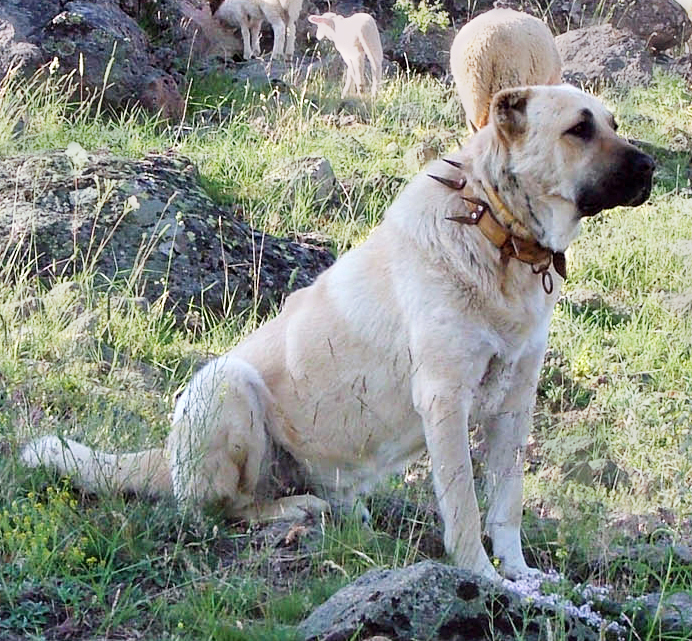
Discover the majestic Kangal Dog: its traits, history, care tips, and why it’s the ultimate guardian breed. Uncover everything about this loyal protector!
Introduction
The Kangal Dog, often referred to as the guardian of Anatolia, is a breed like no other. Known for their immense strength, loyalty, and protective instincts, these dogs are treasured worldwide for their unmatched ability to guard livestock. Whether you’re a dog lover, a farmer, or just curious about this unique breed, this article will provide an in-depth look at what makes the Kangal Dog so special.
What is a Kangal Dog?
The Kangal Dog originates from the Sivas province of Turkey, where they have been bred for centuries as livestock guardians. With their muscular build, calm temperament, and innate ability to assess threats, they have become a cornerstone of Turkish farming culture.
Physical Characteristics
Kangal Dogs are easily recognisable by their imposing yet balanced physique:
- Size: Males typically stand 30-32 inches tall and weigh between 110-145 pounds, while females are slightly smaller, standing 28-30 inches tall and weighing 90-120 pounds.
- Coat: Their short, dense double coat is usually a pale tan or fawn colour, complemented by a black mask on their face.
- Tail: Their bushy tail often curls over their back, a hallmark of the breed.
- Ears: Medium-sized and pendant-shaped, their ears add to their attentive appearance.
Temperament and Personality
Kangal Dogs are known for their:
- Loyalty: Once bonded, they form deep attachments to their families and livestock.
- Intelligence: Highly intelligent, these dogs are quick learners, able to distinguish between friend and foe with minimal training.
- Protectiveness: Kangals are natural guardians, often placing themselves between their charges and potential threats.
- Calm Demeanour: Despite their size and power, Kangals are typically calm and composed, only acting when necessary.
The Kangal Dog as a Livestock Guardian
One of the Kangal’s most celebrated traits is its effectiveness as a livestock guardian. Farmers in Turkey and beyond have relied on these dogs to protect sheep, goats, and cattle from predators like wolves, bears, and even leopards.
Why Are Kangals So Effective?
- Bite Force: The Kangal is reputed to have the strongest bite force of any dog breed, measured at over 700 PSI (pounds per square inch). This makes them formidable defenders.
- Instinctive Guarding Behaviour: Unlike other breeds, Kangals don’t need extensive training to guard livestock; it’s in their DNA.
- Stamina: Built for long days in the field, Kangals can patrol large areas tirelessly.
Real-Life Example: Protecting Against Wolves
In rural Turkey, farmers frequently recount stories of Kangals fending off wolf packs to protect their flocks. One farmer in Sivas shared how his Kangal single-handedly deterred three wolves from attacking his sheep—a testament to their courage and capability.
Owning a Kangal Dog
Owning a Kangal is a unique experience that comes with specific responsibilities. Here’s what you need to know:
Space and Exercise Requirements
Kangals thrive in open spaces where they can roam freely. Apartment living isn’t ideal for this breed. Daily exercise is essential to keep them healthy and happy—think long walks, runs, or even tasks that simulate their guarding instincts.
Training and Socialisation
While Kangals are naturally intelligent, early training and socialisation are crucial:
- Puppy Socialisation: Introduce them to various environments, people, and animals early on to ensure balanced behaviour.
- Obedience Training: Establish basic commands early to maintain control, especially given their size and strength.
- Guarding Instincts: Their protective nature needs to be channelled correctly to avoid overprotectiveness.
Diet and Nutrition
A balanced diet is key to supporting their muscular build and energy levels. High-quality dog food, supplemented with lean meats and vegetables, works well. Portion control is vital to avoid obesity, which can strain their joints.
Health Concerns
While generally healthy, Kangals can be prone to:
- Hip Dysplasia: Common in large breeds, this condition affects their mobility.
- Entropion: An eye condition where the eyelid rolls inward, causing discomfort.
- Parasites: Due to their outdoor lifestyle, regular deworming and tick prevention are necessary.
The Kangal Dog in Popular Culture
In recent years, the Kangal Dog has gained international fame. They have been featured in documentaries, books, and social media, often celebrated for their bravery and loyalty. This newfound popularity, however, has led to concerns about unethical breeding practices and the need to preserve the breed’s integrity.
Fun Facts About Kangals
- National Treasure: The Kangal is considered a national symbol of Turkey, with strict export regulations to preserve the breed’s purity.
- World Record Holder: The Kangal’s bite force is unmatched among domestic dogs.
- Loyal to the Core: A well-trained Kangal will often choose to guard its family over its own comfort, even in extreme weather.
Is the Kangal Dog Right for You?
Before deciding to bring a Kangal into your life, consider these questions:
- Do you have ample space for a large, active dog?
- Are you prepared to invest time in training and socialisation?
- Can you handle their strong protective instincts and ensure they’re channelled appropriately?
If you answered “yes” to these questions, the Kangal could be an excellent addition to your family or farm.
Conclusion
The Kangal Dog is more than just a breed – it’s a legacy of strength, loyalty, and protection. Whether as a livestock guardian or a devoted family pet, Kangals embody the best qualities of man’s best friend. By understanding their needs and characteristics, you can provide them with a life as fulfilling as the one they’ll give you.
If you’re ready to embrace the journey of owning a Kangal, remember: you’re not just getting a dog—you’re gaining a lifelong protector and companion.
Transform Your Dog’s Behavior in Just Days – Discover the professional way to train your dog!